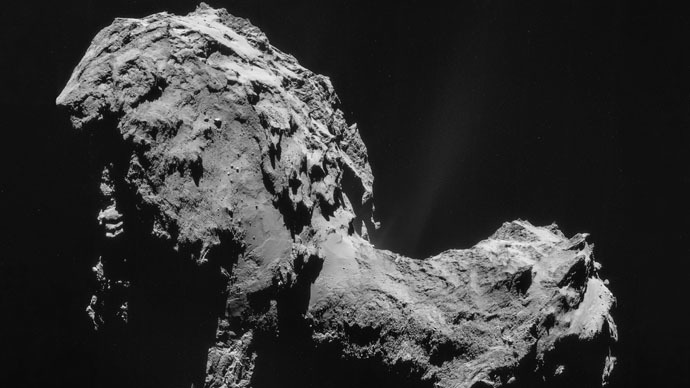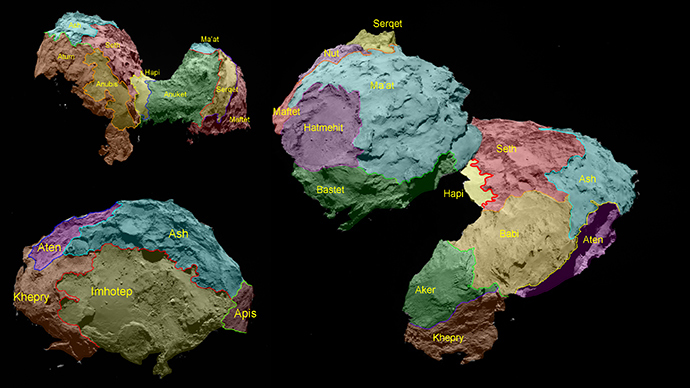Leading comet experts have voiced skepticism over the sensational theory presented by two British astronomers, who claimed the comet currently ‘inhabited’ by the Philae lander could host alien microorganisms from outer space.
The hypothesis of the director of the Buckingham Centre for Astrobiology, Professor Chandra Wickramasinghe and his colleague Dr Max Wallis from the University of Cardiff, claimed that comet 67P/Churyumov-Gerasimenko - and others like it - could be homes to living ”extremophile” organisms. They suggested the comet’s organic-rich black crust could be home to living organisms existing beneath its icy surface.
READ MORE: Home to extraterrestrials? Philae probe could be sitting on comet filled with alien life
“No scientist active in any of the Rosetta instrument science teams assumes the presence of living micro-organisms beneath the cometary surface crust,” Uwe Meierhenrich of Université Nice Sophia Antipolis in France, told the Guardian. Meierhenrich helped develop the COSAC chemical analyzer installed on the Philae probe lander.
Meierhenrich recalled the black color of the comet’s crust was predicted decades ago, in 1986, by J. Mayo Greenberg, who said it was because of the organic molecules present in the comet’s matter reacting to hard solar radiation. It seems Philae’s data doesn’t contradict this theory.
“These explanations seem to be valid, also with regard to new data of the cometary Rosetta mission,” Meierhenrich wrote.
Even though Philae is not equipped with life detectors, the probe’s COSAC and PTOLEMY instruments could measure key organic molecules that life forms known to us consist of.
“We can thereby distinguish between the biological and astrochemical formation of organics,” Meierhenrich stated.
Ahead of the publication of the list of organic molecules already detected on the 67P/Churyumov-Gerasimenko comet, which is planned for late July in the journal Science, Meierhenrich reveals their formation was most probably non-biological.
“Certainly the presence of ice and organic solids on comets in general, and on Churyumov-Gerasimenko in particular, is well established. However, jumping from that to microorganisms and even to lakes of liquid water is going well beyond the data,” Chris McKay, an astrobiologist at NASA's Ames Research Center, told NBC News in an email. “Of course many speculations that go beyond the data prove to be correct when adequate data is collected. But many more speculations that go beyond the data turn out to be incorrect,” McKay wrote.
Professor Chandra Wickramasinghe, who proposed the existence of life on the comet, is a world-famous proponent of extraterrestrial origins of life on our planet. He suggested the currently popular theory that carbon-based life on our planet eventually emerged through the molecular “building blocks” brought to Earth by comets.
In 2001, Wickramasinghe said samples of stratospheric dust collected at an altitude of 41km contained extraterrestrial microbes. Two years later, in 2003, he made a supposition that the SARS coronavirus has extraterrestrial origins.


